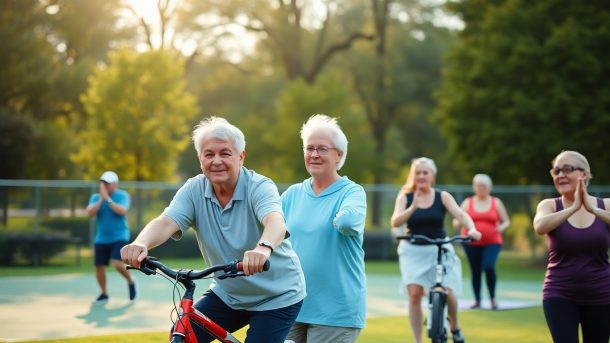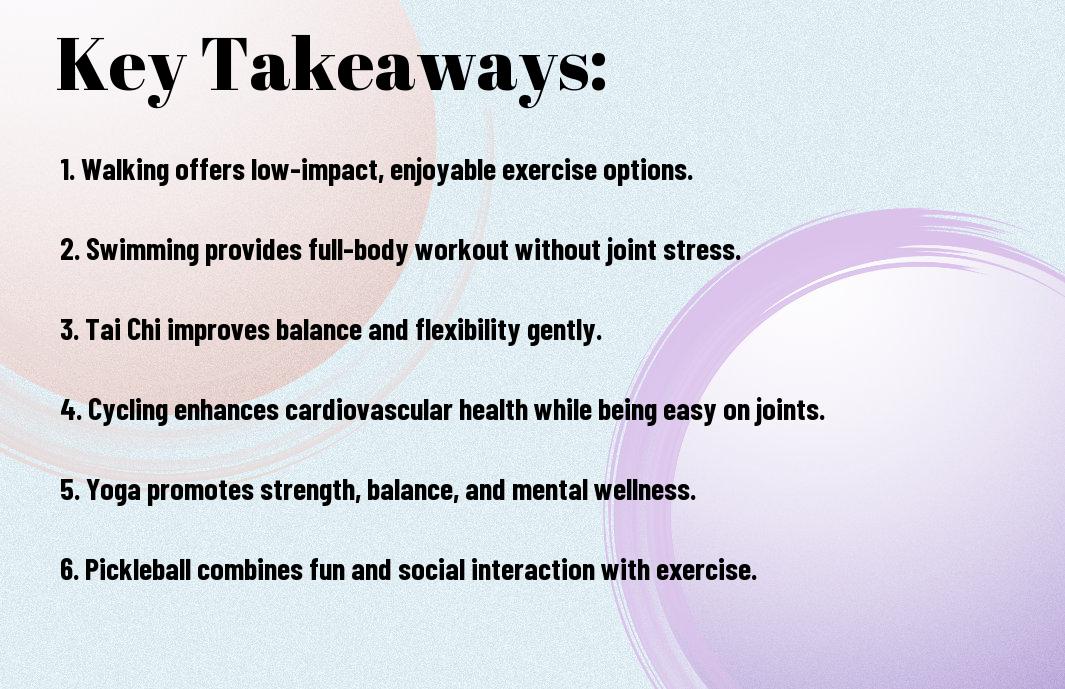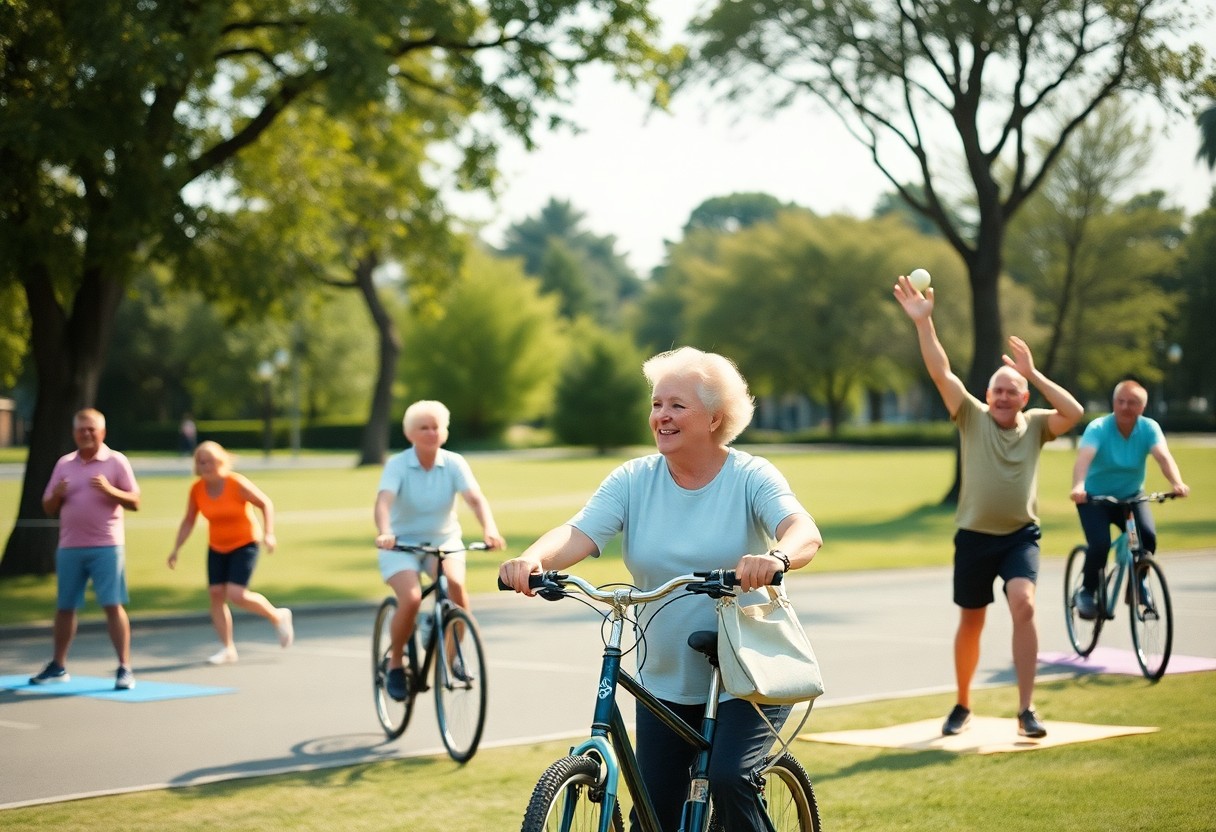Just because the main season has come to an end doesn’t mean your fitness journey should stop. Staying active during the off-season is imperative for maintaining your physical and mental well-being, while also preparing you for your next big challenge. In this post, you’ll discover effective strategies and enjoyable activities designed to help you stay engaged and motivated, ensuring you come back stronger when the season resumes. So, lace up your shoes and get ready to learn how to make the most of your off-season time!
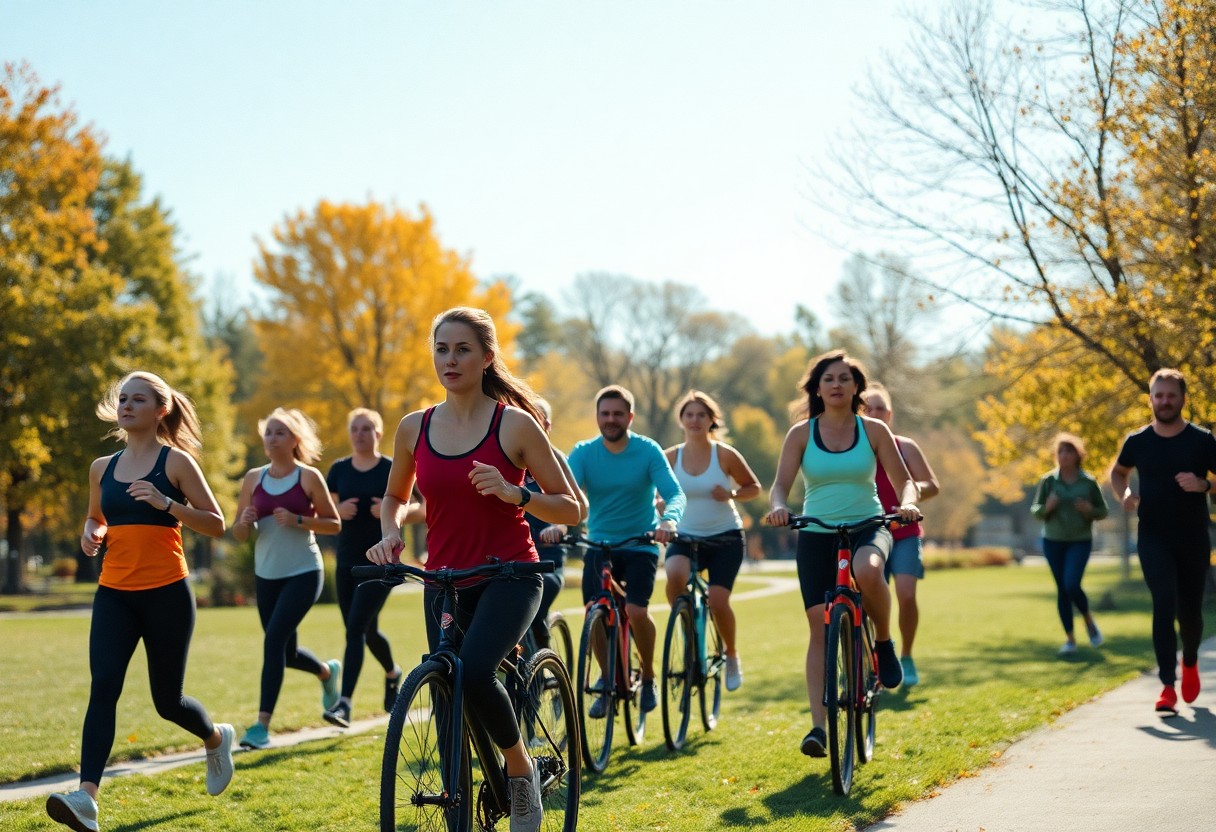
Key Takeaways:
- Set Goals: Establish clear, achievable fitness objectives to maintain motivation during the off-season.
- Diverse Activities: Engage in a variety of exercises such as swimming, cycling, or yoga to keep workouts interesting and full-bodied.
- Strength Training: Incorporate strength workouts to build muscle and prevent injuries when the season begins again.
- Schedule Workouts: Plan a regular workout routine to establish consistency and accountability.
- Mix in Fun: Participate in recreational sports or activities that you enjoy to stay active without it feeling like a chore.
Understanding the Importance of Staying Active
For athletes and fitness enthusiasts, staying active during the off-season is necessary for maintaining physical health and preventing setbacks. A consistent activity regimen keeps your body conditioned, reduces the risk of injury, and ensures that your performance levels don’t drop significantly when you return to your primary sport or activity. Moreover, remaining active fosters a sense of discipline and commitment, which can be beneficial in all aspects of your life.
Benefits of Off-Season Activity
Importance of off-season activity cannot be overstated. Engaging in regular physical activity during your downtime promotes better cardiovascular health, enhances muscle retention, and aids in mental clarity. Additionally, varying your exercise routine can help you discover new interests and skills, making your fitness journey more enjoyable.
Psychological Factors in Staying Motivated
Importance of psychological factors in your motivation cannot be overlooked. Staying active during the off-season can help alleviate feelings of stagnation and boredom that often accompany breaks. Setting manageable goals and celebrating small achievements can provide a continuous source of motivation. Here are some strategies to maintain your enthusiasm:
- Create a structured routine.
- Engage with a community or accountability partner.
- Explore new physical activities or classes.
- Reflect on your progress regularly.
- Perceiving your off-season training as an exciting opportunity can improve your mindset and overall experience.
For instance, involving yourself in a group class or team setting may ignite your passion for physical activity. Using visualization techniques can help you see your long-term goals, creating a clearer purpose for your training. Keeping a journal can help track your progress and highlight areas of improvement. By actively engaging with your fitness journey, you create an environment where motivation thrives:
- Establish achievable short-term goals.
- Seek feedback from peers or coaches.
- Keep your workout varied and exciting.
- Stay mindful of the benefits beyond physical performance.
- Perceiving every effort as an important step toward your overall growth can keep you engaged and motivated.
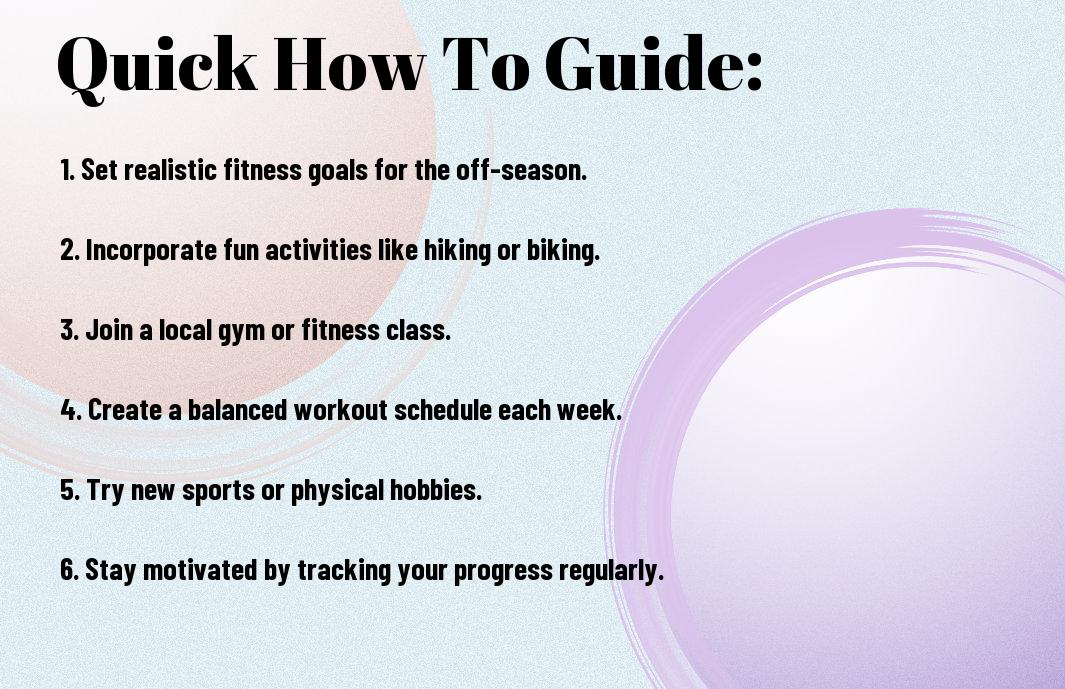
How to Set Realistic Goals
Some of the most effective strategies for staying active during the off-season involve setting goals that motivate you while being achievable. Start by identifying what you aim to accomplish, whether it’s improving fitness, increasing endurance, or exploring a new activity. By giving yourself clear objectives, you can maintain focus and measure success, making your off-season productive and fulfilling.
Short-Term vs. Long-Term Goals
Clearly, distinguishing between short-term and long-term goals is necessary for your fitness journey. Short-term goals may include committing to a weekly workout schedule or joining a local fitness class, while long-term goals could involve completing a race or reaching a specific fitness milestone. Balancing both types helps sustain motivation and provides a structured pathway to your aspirations.
Tracking Progress
Tracking your progress helps you stay accountable and motivated throughout the off-season. Regularly recording your workouts, activities, and achievements enables you to see how far you’ve come and make adjustments when necessary. It also allows you to celebrate small victories, which can boost your confidence and keep you engaged in your fitness journey.
To effectively track your progress, consider using a journal, app, or fitness tracker to monitor your workouts and objectives. Set aside time weekly or monthly to review your achievements, assess your challenges, and strategize your next steps. This reflection allows you to stay aligned with your goals and motivates you to push further while ensuring you remain active during the off-season.
Tips for Finding Activities You Enjoy
All it takes is a little exploration to find enjoyable activities that keep you active during the off-season. Here are a few tips to help you get started:
- Reflect on childhood interests that may still excite you.
- Try classes or workshops to experiment with new skills.
- Ask friends for recommendations or join them in their activities.
- Utilize online resources to discover local events and groups.
Any activity that brings you joy can motivate you to stay active and engaged.
Exploring New Hobbies
An excellent way to stay active during the off-season is by exploring new hobbies that interest you. This could range from outdoor activities like hiking and biking to indoor pursuits such as dance or yoga. By trying different activities, you’ll discover what truly appeals to you and keeps you engaged throughout the season.
Group vs. Solo Activities
Even when considering staying active, it’s important to evaluate whether you prefer group or solo activities. Group activities can provide social interaction and motivation, while solo pursuits often allow for personal reflection and flexibility in scheduling.
Plus, both types of activities offer unique benefits. Engaging in group activities like team sports or community classes can boost your motivation and accountability through social support. In contrast, solo activities such as running, biking, or yoga can provide a sense of personal achievement and tranquility. By mixing both types into your routine, you’ll enjoy the advantages of each while keeping your activity levels up during the off-season.
Incorporating Fitness into Your Daily Routine
Not all fitness has to involve a gym or scheduled workouts. You can seamlessly integrate physical activity into your daily life by making small adjustments. Opt for walking or cycling instead of driving, take the stairs instead of the elevator, or have standing meetings. This way, you can maintain your activity levels without needing an extra hour dedicated solely to exercising.
Scheduling and Time Management
You can easily fit fitness into your day by prioritizing your schedule. Look for pockets of time where you can incorporate short bursts of activity, whether it’s a quick morning stretch, a walk during lunch, or a few minutes of bodyweight exercises while watching TV. Planning your day with exercise as a non-negotiable task helps create consistency.
Creative Ways to Stay Active
With a little imagination, you can find enjoyable ways to keep moving. Engaging in fun activities makes staying active feel less like a chore and more like a lifestyle choice.
This could include alternative forms of exercise such as dance classes, hiking with friends, or even playing sports. Consider turning household chores into a workout by cranking up some music and dancing while you clean or gardening for an effective physical challenge. By diversifying your activities, you keep things interesting and sustainable, ensuring that you remain active even during off-peak seasons.
Nutrition and Recovery Considerations
Many athletes underestimate the importance of nutrition and recovery during the off-season. This period is not just a break from training; it’s an opportunity to refocus on your dietary habits and provide your body with the necessary nutrients to recover and prepare for the upcoming season. Prioritizing balanced meals rich in proteins, healthy fats, and carbohydrates will help your body heal and maintain energy levels, ensuring you’re ready to hit the ground running when training ramps back up.
Eating for Energy
If you want to stay active during the off-season, focus on consuming energy-dense foods that fuel your workouts and daily activities. Incorporate complex carbohydrates like whole grains, fruits, and vegetables, and ensure you include lean protein sources to support muscle repair. Additionally, incorporating healthy fats from nuts, seeds, and avocados can provide sustained energy levels, leaving you more prepared for physical demands.
Importance of Rest and Recovery
While maintaining an active lifestyle, it’s vital to prioritize rest and recovery to allow your body to heal and grow stronger. Downtime is when your muscles recuperate and adapt, enabling better performance when training resumes. Acknowledging the need for adequate sleep, hydration, and lighter training sessions helps you avoid burnout and injuries. Balancing activity with rest ensures your body is primed for the challenges ahead.
For instance, taking at least one full rest day each week can significantly enhance your recovery process. It’s recommended that you also integrate techniques such as stretching, yoga, or foam rolling to alleviate muscle tension and improve flexibility. Additionally, focusing on sleep hygiene can enhance your overall recovery by maximizing the time your body spends in the critical REM stages of sleep, where muscle repair and growth mainly occur. By prioritizing recovery, you set a solid foundation for achieving your goals in the upcoming season.
Staying Accountable and Motivated
After establishing a routine, staying accountable and motivated can be a game changer in maintaining your off-season activity levels. Set clear goals, and don’t hesitate to share them with friends or family. Having others aware of your ambitions can create a supportive environment, pushing you to stay committed. Consider joining a local fitness group or participating in online challenges to keep the momentum going throughout the off-season.
Finding a Workout Buddy
Assuming you have a friend or fellow athlete who shares your fitness goals, teaming up can make workouts more enjoyable and sustainable. A workout buddy provides mutual encouragement and accountability, turning mundane exercises into fun activities. With someone beside you, the challenge of staying active becomes a shared experience, motivating you both to push each other toward your goals.
Utilizing Technology and Apps
You can leverage various fitness apps and wearable technology to enhance your off-season activity. These resources can help track workouts, set reminders, and monitor your progression, ensuring that you remain focused on your goals. Many apps also offer community features, allowing you to connect with like-minded individuals for added motivation.
Plus, integrating technology into your fitness regimen can provide insights into your performance trends and help you adjust your workouts accordingly. Many apps include features like personalized training plans, reminders for activity, and even challenges that you can share with friends. By incorporating these tools, you stay connected to your fitness goals and encourage consistency in your off-season routine.
Conclusion
Upon reflecting, staying active during the off-season offers numerous benefits for your physical and mental well-being. By incorporating a mix of strength training, flexibility exercises, and enjoyable outdoor activities into your routine, you can maintain your fitness levels and prepare for the upcoming season. Setting specific goals and creating a structured plan will help you stay motivated and focused. Embrace this time to explore new activities, connect with others, and cultivate balance in your fitness journey, ensuring you return stronger and more prepared for what’s ahead.
Q: What are some effective indoor exercises to stay active during the off-season?
A: There are numerous indoor exercises that can help you maintain your fitness during the off-season. Some effective options include bodyweight workouts like push-ups, squats, and lunges. You can also try resistance bands for strength training or yoga for flexibility and balance. Additionally, participating in online fitness classes or utilizing exercise apps can provide guided workouts that keep you motivated and engaged even when you’re indoors.
Q: How can I integrate outdoor activities to keep active despite the weather?
A: To stay active outdoors during the off-season, you can choose activities that are weather-appropriate. For mild or cool days, consider going for hikes, biking, or jogging. On rainy days, try walking in parks with covered pathways or using outdoor gym equipment that can withstand the elements. Dressing in layers and investing in waterproof gear can also make outdoor activities more enjoyable during inclement weather, allowing for a more flexible approach to staying active.
Q: What role does nutrition play in staying active during the off-season?
A: Nutrition plays a significant role in maintaining energy levels and supporting your physical activity during the off-season. Aim for a balanced diet rich in whole foods, including plenty of fruits, vegetables, lean proteins, and whole grains. Eating smaller, more frequent meals can help sustain your energy throughout the day and support recovery after workouts. Additionally, staying hydrated is necessary, especially if you’re engaging in outdoor activities or workouts, as it helps maintain overall health and performance.
